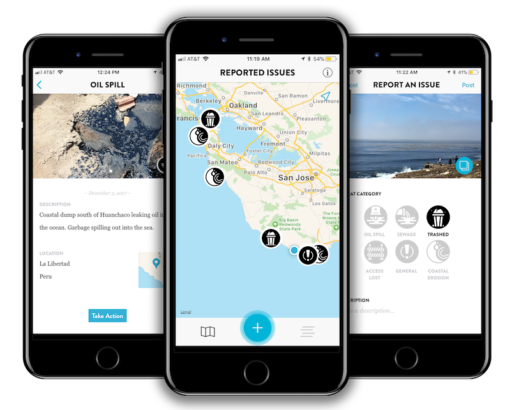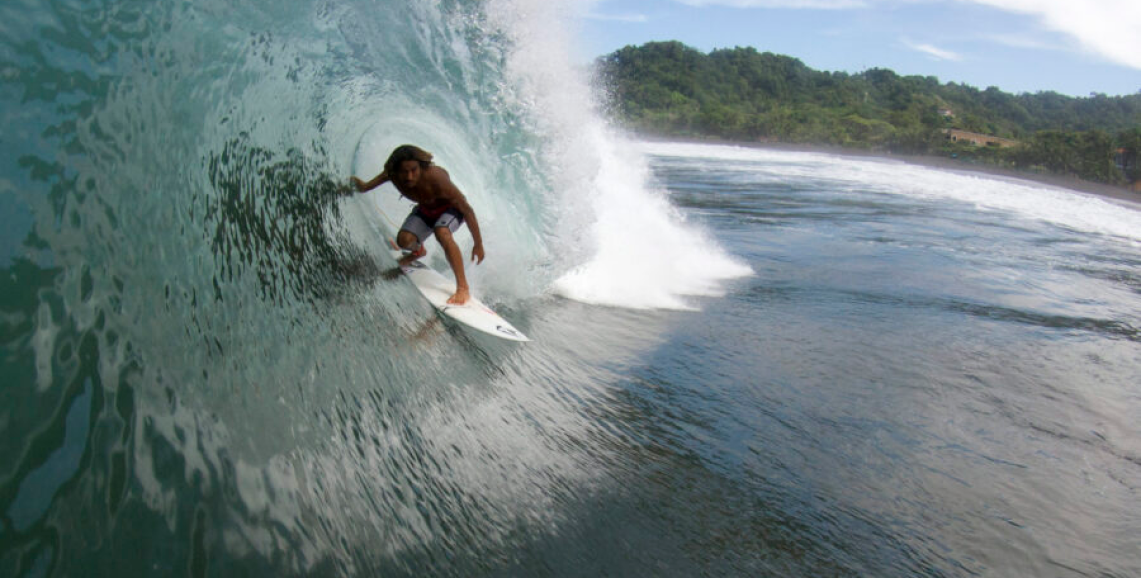Although marine protected areas are essential to protecting biodiversity and sustaining fisheries, enforcing protections in these far-flung refuges remains a challenge. But what if local people could harness technology to monitor protected areas for trash, illegal development, or water quality issues?
That is the idea behind Save The Waves’ new mobile app, being developed with support from Schmidt Marine Technology Partners. Although Save The Waves is primarily dedicated to protecting surf ecosystems, executive director Nik Strong-Cvetich knows that surfers have intimate knowledge of coastal environments—and that expertise can be an important tool in protecting those places.
The Save The Waves’ app collects and synthesizes surfers’ knowledge, crowdsourcing environmental reports from surfers around the world and sharing the information with relevant partner organizations. If, for example, a surfer in Brazil notices that a nearby river is flooding and impacting surfing conditions, she can post a geotagged report to Save The Waves’ app. That report will then automatically be shared with local organizations monitoring water quality in the region.

“There are so many citizen science apps out there,” Strong-Cvetich says. “But a lot of times you end up only getting input from the science crowd. It’s not mainstream. Here you’ve got a group of people who are already spending tons of time on the coast and are naturally incentivized to want to help.”
Modernizing the surfing switchboard
A decade ago, Strong-Cvetich noticed that surfers were using Save The Waves’ Facebook page to report concerning observations, from oil spills to beached whales. Save the Waves began acting like a switchboard, sharing the reports with environmental and government organizations who could help.
Building on this momentum, Save The Waves launched a prototype app in 2017 to give surfers a dedicated platform for reporting their observations. Today 4,000 surfers in 35 countries use the app, but Strong-Cvetich still acts as the de facto switchboard operator, reading each report and manually and sharing it with the relevant authorities.
The new app, being developed with support from Schmidt Marine, Valtech and others, will help Save The Waves scale up and automatize this work. Each report will be both geotagged and tagged as a specific type of threat, from algal blooms to water quality issues. These tags will make it possible to automatically share the report with the right authorities or organizations. And perhaps best of all, they sync up with Save The Waves’ stewardship efforts.
“At the heart of all this is our goal to protect a thousand surf ecosystems by 2030,” Strong-Cvetich explains. One way to achieve that goal is to get local constituencies on board with protected areas, and one way to do that is to give people a tool—like Save The Waves’ app—that offers a sense of ownership over local ecosystems. “We want the app to be a tool that the surf community uses frequently to engage in stewardship,” Strong-Cvetich says.
On Chile’s central coast, for example, Save The Waves worked with several local and international organizations to create a new nature sanctuary, called Piedra del Viento. The sanctuary has broad support, but its managers lack the resources to regularly monitor it. “Surfers and local people spend many hours in nature and are the first to notice if something is wrong,” says Felipe Rodríguez, director of Fundación Rompientes, a Chilean nonprofit and Save The Waves partner. “If we can equip them with simple tools that contribute to the monitoring of surf protected areas, we would be moving towards a paradigm shift, where crowdsourcing could contribute to the conservation of these places.”
Higher quality, more actionable data
Once the app is released this spring, Save The Waves also hopes more people will begin to use it; they’re striving to reach 30,000 users globally. Such a broad user base will result in higher quality data, which will make the data more useful to the groups doing on-the-ground enforcement and monitoring.
And by partnering with groups like Conservation International and Schmidt Marine Technology Partners, the data that Save The Waves is gathering will further the global effort to protect 30 percent of the ocean by the year 2030. “Essentially,” says Strong-Cvetich, “Schmidt funding is making the data more actionable.”
Cover image courtesy Esteban Delgado.
